What You Need to Know About Hardcore Festies
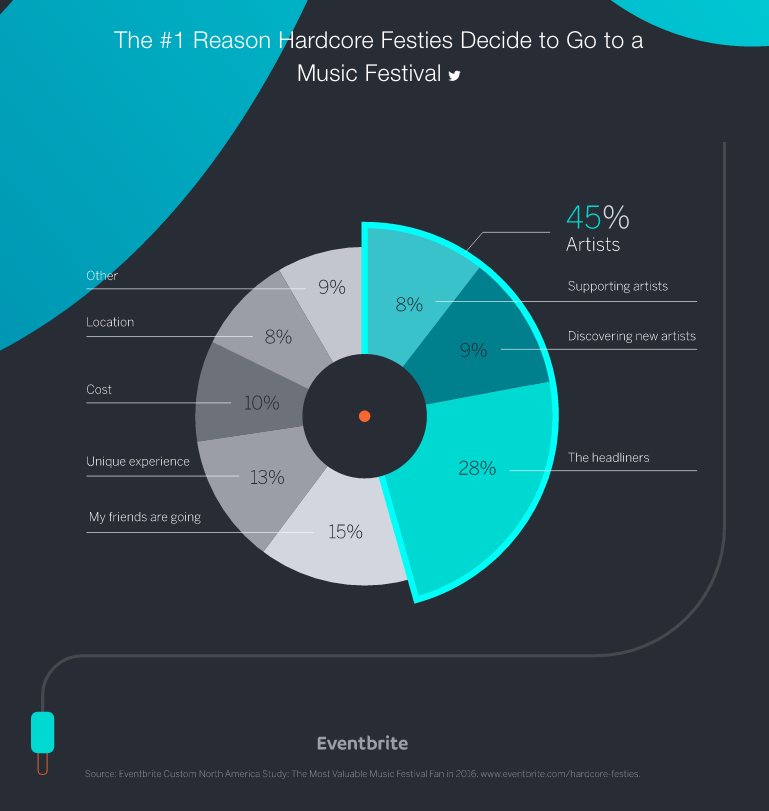
Eventbrite recently asked: Are we at the apex of music festival popularity or is it still growing? That’s a good question, so the ticketing platform worked with MusicWatch Inc. to survey more than 1,000 North American 18-to-49-year-olds who attended at least one music festival in the last year to better understand their habits and preferences.
“We uncovered a range of insights around how much people are spending and why they’re attending,” Eventbrite wrote in its report. “We also learned that despite industry speculation, demand for music festivals is still strong: nearly 40 percent of festival attendees said they went to more music festivals this year compared to last year (41 percent attended the same amount), and over half plan to attend even more festivals next year.”
The company discovered that hardcore festies—while only 20 percent of festival attendees—account for almost 80 percent of revenue.
“Hardcore festies are not only attending more events overall, they’re also more valuable to each festival: they’re spending $91 (or 78 percent) more on a typical festival ticket compared to casual festies, and often attend their favorite festivals many times,” Eventbrite reported. “In fact, hardcore festies outrank casual festies in VIP purchasing, social influence, and virtually every other aspect of spending, attendance, and engagement.”
The full report, “Hardcore Festies: The Driving Force Behind Today’s Growth in Music Festivals,” is available to read on Eventbrite’s website.
(Image: Eventbrite)
IAVM Conference Strategy for VenueConnect 2017
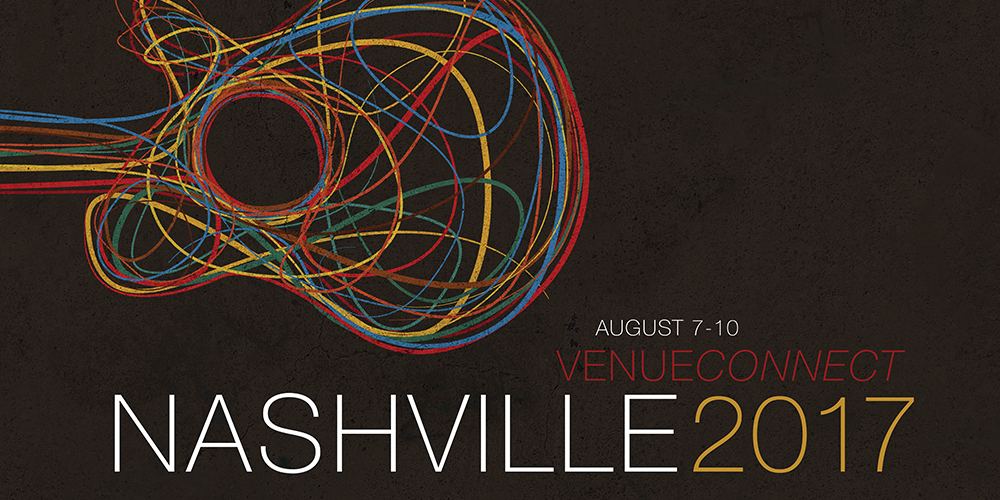
At the 91st annual VenueConnect in Minneapolis in July, the International Association of Venue Managers (IAVM) announced a new “Conference Strategy.” Along with new president and CEO, Brad Mayne, CFE, and an interwoven “Re-Brand,” this strategy will reshape and improve IAVM’s conference offerings starting with VenueConnect 2017.
The conference strategy builds on five key objectives:
- Protect the intimacy and focus of the sector conferences
- Preserve the cross-sector networking and knowledge sharing enabled by VenueConnect
- Secure the IAVM marketplace as a thriving hub for Allied and Professional connections
- Grow the relevance and value of the overall conference experience
- Provide the opportunity to integrate private meetings into the design of the conference in future years
“I’m most looking forward to the strong focus on sector tracks. This structure will make it easier for me to justify in my budget attending the conference or sending my team members to the conference,” said Erin Jepson, CMP, 2016-2017 chair of the VenueConnect Program Committee. “The opportunity to participate in an event that brings the incredible minds that plan each of the sector conferences to the VenueConnect planning table is an opportunity not to be missed next year in Nashville.”
The development of the conference strategy contained very inclusive processes to ensure IAVM members’ voices were heard.
“The results are better for it,” said Karen Totaro, CFE, 2015-2016 IAVM chair.
To learn more about the development and future implementation, please watch the Conference Strategy presentation below that was given at VenueConnect 2016 and provides an in-depth overview of the strategy development and the steps IAVM will take moving forward. We also have a Conference Strategy brochure as a companion piece.
IAVM’s 92nd annual VenueConnect will be held at the Music City Center in Nashville, Tennessee, Aug. 7-10, 2017.
I Am Venue Management: Doug Booher, CFE
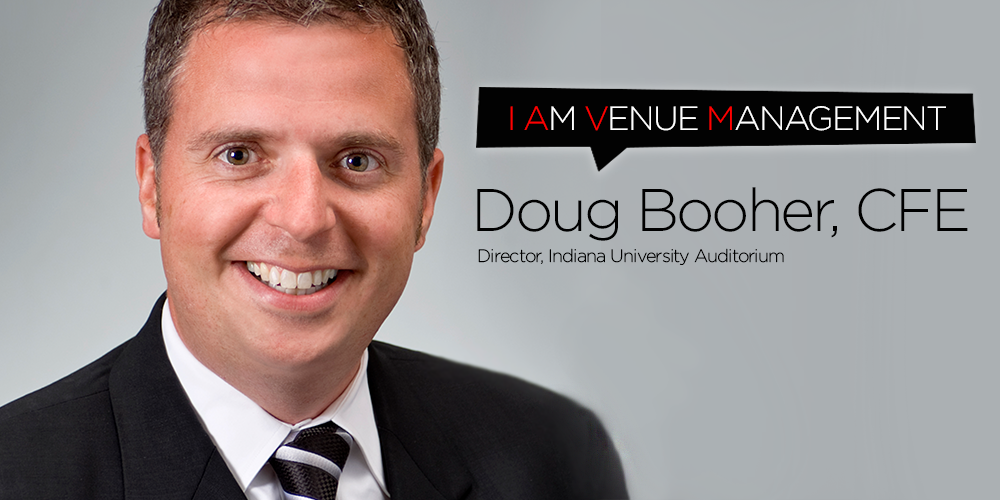
You, as an IAVM member, are our most important asset. Without your commitment to the association and to the venue management industry, we wouldn’t be here. Because of your support, we are featuring member profiles in our I Am Venue Management series. If you are interested in participating in the I Am Venue Management series, please visit http://www.iavm.org/i-am-venue-management-share-your-story.
If I wasn’t doing this I’d be a: part of another sector of the hospitality or beverage industry.
Most impressive person I’ve ever met is: Ray Charles. He was genuinely warm and engaging with our crew, staff, and students. At the same time, he had a keen business sense. He demanded excellence and professionalism from everyone on his tour and always gave the audience his very best.
I unwind by: spending time on the water with family and friends.
On my desk right now is: a few industry publications, my MacBook Pro, and some photos of my wife and daughter.
My favorite IAVM program I ever attended was: Venue Management School, class of 1999.
If I were on the other side of the seats, I’d be: an artist manager or producer.
One trait an up-and-coming venue manager should have is: the ability to maintain perspective in a chaotic situation.
One up-and-coming venue star in the arena industry is: my friend, Al Karosas, at the Bryce Jordan Center at Penn State. He’s never afraid to try something new to make his venue better.
One of my goals for this year is to: help foster more transparency between the work of the IAVM Board of Directors and our members.
How do you plan to help elevate the profession? Work to provide meaningful experiences in venue management for young people interested in the industry.
Where do you see new growth opportunities in the profession? Strategic use of social media, the next generation of guest experience initiatives, and more seamless collaboration with the artists and teams that play our venues are all areas where we can continue to innovate.
How do you stay current with industry trends and developments? Visit other venues, read the various industry blogs and publications, and check in with friends and colleagues throughout the industry.
Who are three people you’d invite to a dinner party and why? Peter Drucker, my favorite management guru; Walt Disney, one of the true architects of guest experience; and Dave Chappelle, because what dinner party wouldn’t be more interesting with Dave Chappelle?
Doug Booher, CFE, is the director of Indiana University Auditorium and the 2016-2017 first vice chair of the IAVM Board of Directors.
Steve Griggs to Speak at the Arena Management Conference
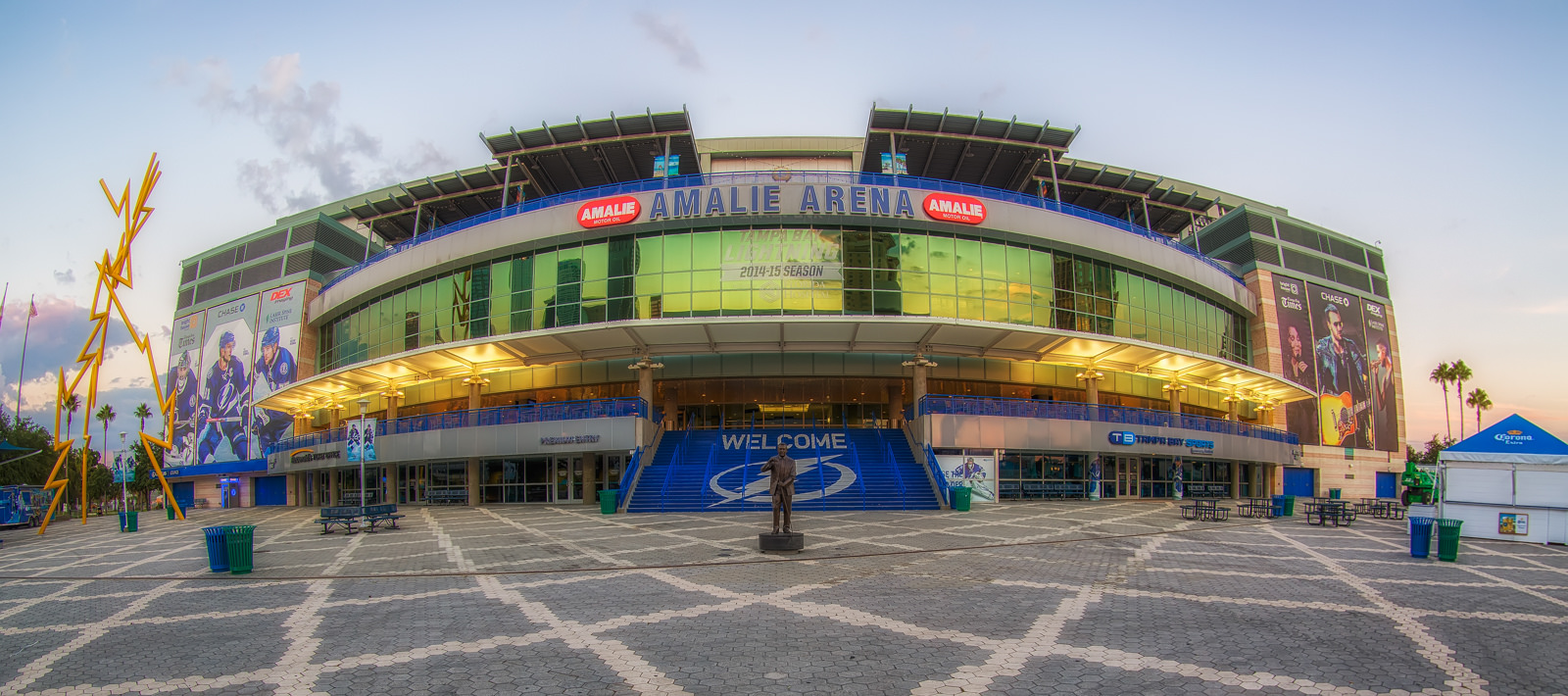
We wrapped up VenueConnect last week, and up next is the 2016 Arena Management Conference (AMC) in Tampa, Florida, September 18-20. The AMC programming committee has worked hard at creating a great educational schedule and they’ve secured a notable keynote speaker: Steve Griggs.
 Griggs is the chief executive officer of Tampa Bay Sports and Entertainment, which includes the Tampa Bay Lightning, Tampa Bay Storm, and Amalie Arena. He oversees all of the organization’s business operations at the arena. He was executive vice president of sales and marketing for the Orlando Magic for three years and vice president of sales and service for the Minnesota Wild for eight years prior to joining Tampa Bay Sports and Entertainment.
Griggs is the chief executive officer of Tampa Bay Sports and Entertainment, which includes the Tampa Bay Lightning, Tampa Bay Storm, and Amalie Arena. He oversees all of the organization’s business operations at the arena. He was executive vice president of sales and marketing for the Orlando Magic for three years and vice president of sales and service for the Minnesota Wild for eight years prior to joining Tampa Bay Sports and Entertainment.
We asked him a few questions about marketing, leadership, and guest experiences.
You have a strong marketing background. What are some of the new trends you’re noticing in marketing in arenas? How easily can these be scaled to venues of various sizes?
Steve Griggs: During my career in the sports industry, I’ve watched how marketing initiatives have evolved to better engage franchise’s fan bases. Recently, I’ve seen virtual reality activation be a new tool to bring sports teams and fans closer. Second-screen activation has helped sponsors bring their product closer to fans that attend games, enhancing sponsorship money for sports teams.
How has your leadership style changed over the course of your career?
SG: My leadership style has evolved over my career in the sports industry by understanding the importance of leading through example. I have found that throughout my career that it’s backing up my words with my actions. In order to drive the global vision of the company and get the best results, it’s very important to lead through action and words. I’ve found that being a leader is about motivating people by different means, but leading through my actions has the most positive results.
The Lightening continue to see increases in game attendance. What are you and the organization doing to help drive rising attendance?
SG: The Lightning use a variety of different tactics to help improve our growing attendance from year to year. Our on-ice success over the past few years has certainly helped with our attendance numbers but we have also used strategic planning, analytics, our fan experience, and our community engagement to grow awareness of our brand. When our fans attend a Lightning home game, they are treated to a world-class sporting event from the moment they park their car to when they leave the building.
Finally, what thoughts or ideas would you like attendees to take away from your keynote at AMC?
I would like the attendees to leave AMC thinking about how solid leadership can build a great vision and lead a brand and company transformation. The success of your company greatly depends on the culture you create among your employees. Building a world-class organization begins with developing and investing in your employees. It’s also important to remember that the transformation of a brand begins with a strong, strategic plan that focuses on improving the local community and delivering the consumer a great product.
AMC registration is open. See you in Tampa!
(Top image: Matthew Paulson/Creative Commons)
Sponsored Story: AVAI Mobile Selected as Official Mobile App Provider for IAVM
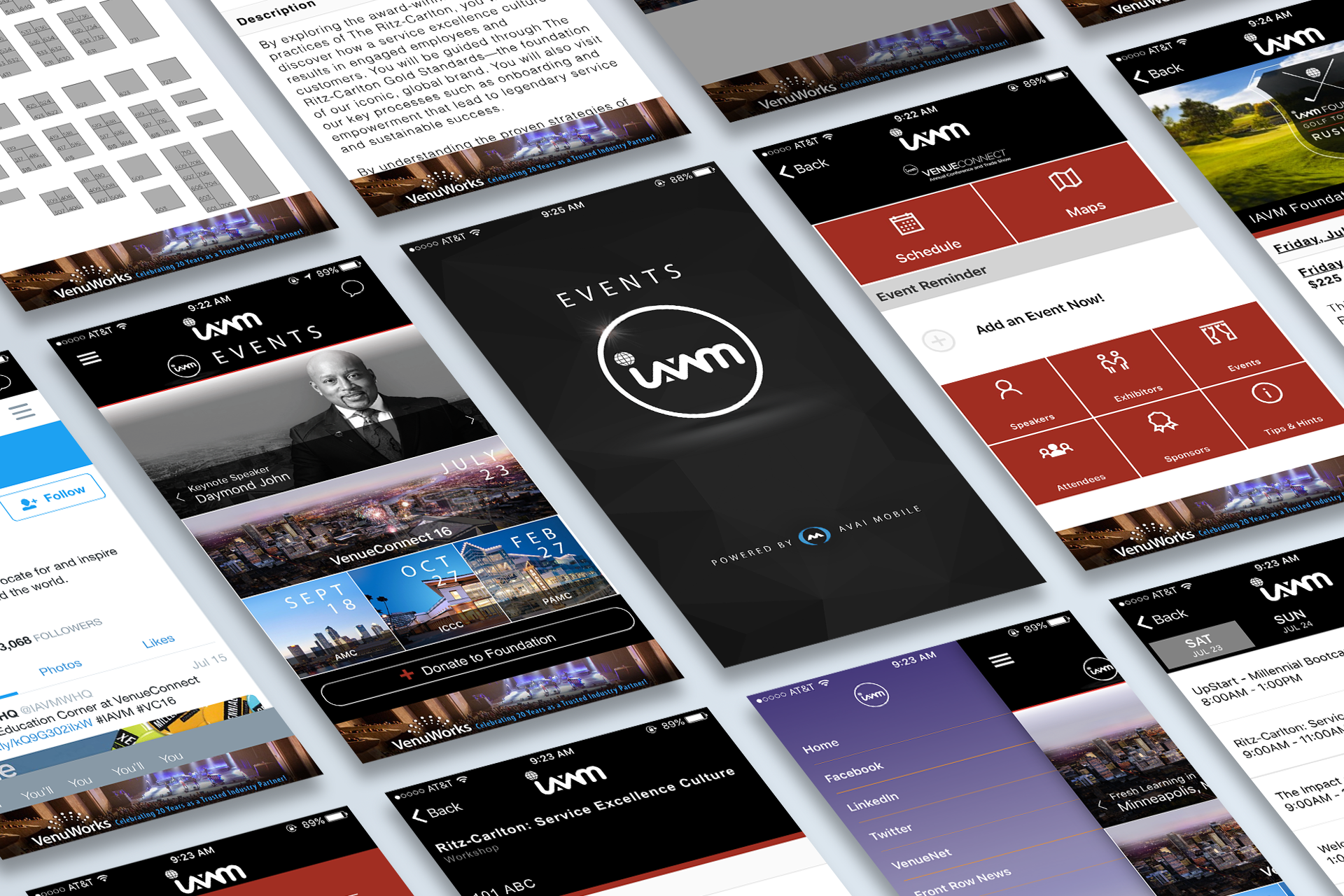
IAVM has announced a new strategic partnership with AVAI Mobile Solutions, LLC (www.avaimobile.com), one of the world’s foremost mobile technology platform providers dedicated to creating the next generation of onsite mobile experiences for venues.
AVAI Mobile will work with IAVM to produce native mobile apps for IAVM events, including VenueConnect and sector meetings. The app launch begins this month, with new updates and features releasing throughout the year.
IAVM will be leveraging the same mobile technology platform that many venues are already leveraging to create a compelling visitor experience for their patrons year-round.
“As we enter a new era of increasingly sophisticated mobile technologies, venues face tough challenges staying ahead of a shifting demographic landscape,” said Josh Meler, CMO of AVAI Mobile. “Our mobile platform is built to unite what are traditionally separate systems into one cohesive mobile ecosystem. This will give visitors unprecedented access to everything a venue has to offer, such as ticketing or POS, and give venue managers live insights and real-time access to tools that allow staff to shape the visitor experience anytime, anywhere. We believe this is a necessity of doing business in a modern world.”
“We are pleased to form a strategic partnership with AVAI Mobile,” said Christy Jacobs, director of marketplace sales for IAVM. “By joining AVAI Mobile’s expertise in mobile technology with our mission to educate and inspire venue professionals, we can lay a foundation for exciting new opportunities and digital transformations.”
About AVAI Mobile
AVAI Mobile’s mission is to provide venues with a better way to build and manage mobile apps.
At the core of IAVM’s mobile strategy is the AVAI Mobile Platform, AMP™. AMP is designed to deliver powerful out-of-the-box functionality, unprecedented access and configurability, world-class performance and scalability, and seamless third-party integrations. To date, the AVAI Mobile platforms have been used to create over 1,800 native mobile applications, for a variety of destinations, events, and experiences.
Do you want to receive a Front Row News weekly digest?
Categories
- Allied (861)
- Architecture (147)
- Arenas (750)
- Career (897)
- Convention Centers (897)
- Education (623)
- Events (1,544)
- Food & Beverage (193)
- Foundation (113)
- Guest Experience (1,497)
- Industry News (2,270)
- Leadership (1,888)
- Marketing (150)
- Membership (2,001)
- Music (213)
- Performing Arts Centers (456)
- Professional Development (409)
- Research (128)
- Safety & Security (442)
- Sports (764)
- Stadiums (611)
- Student (159)
- Technology (516)
- Ticketing (92)
- Touring (82)
- Trends (365)
- Uncategorized (685)
- Universities (218)
- Video (25)
- Young Professional (198)
Twitter Feed
- Twitter feed loading
Recent Posts
- Cobb-Marietta Coliseum & Exhibit Hall Authority Releases 2024 Annual Report
- Hayley Nath Named IAVM’s 2025 Outstanding Volunteer Service Award Winner
- San Diego Convention Center Expands Lactation Support with New Mamava Pods
- Six Named to Omaha Business Hall of Fame, Enshrined in Museum Exhibit
- Welcome to Our Newest Members
Categories
- Allied
- Architecture
- Arenas
- Career
- Convention Centers
- Education
- Events
- Food & Beverage
- Foundation
- Guest Experience
- Industry News
- Leadership
- Marketing
- Membership
- Music
- Performing Arts Centers
- Professional Development
- Research
- Safety & Security
- Sports
- Stadiums
- Student
- Technology
- Ticketing
- Touring
- Trends
- Uncategorized
- Universities
- Video
- Young Professional
Archives
- July 2025
- June 2025
- May 2025
- April 2025
- March 2025
- February 2025
- January 2025
- December 2024
- November 2024
- October 2024
- September 2024
- August 2024
- July 2024
- June 2024
- May 2024
- April 2024
- March 2024
- February 2024
- January 2024
- December 2023
- November 2023
- October 2023
- September 2023
- August 2023
- July 2023
- June 2023
- May 2023
- April 2023
- March 2023
- February 2023
- January 2023
- December 2022
- November 2022
- October 2022
- September 2022
- August 2022
- July 2022
- June 2022
- May 2022
- April 2022
- March 2022
- February 2022
- January 2022
- December 2021
- November 2021
- October 2021
- September 2021
- August 2021
- July 2021
- June 2021
- May 2021
- April 2021
- March 2021
- February 2021
- January 2021
- December 2020
- November 2020
- October 2020
- September 2020
- August 2020
- July 2020
- June 2020
- May 2020
- April 2020
- March 2020
- February 2020
- January 2020
- December 2019
- November 2019
- October 2019
- September 2019
- August 2019
- July 2019
- June 2019
- May 2019
- April 2019
- March 2019
- February 2019
- January 2019
- December 2018
- November 2018
- October 2018
- September 2018
- August 2018
- July 2018
- June 2018
- May 2018
- April 2018
- March 2018
- February 2018
- January 2018
- December 2017
- November 2017
- October 2017
- September 2017
- August 2017
- July 2017
- June 2017
- May 2017
- April 2017
- March 2017
- February 2017
- January 2017
- December 2016
- November 2016
- October 2016
- September 2016
- August 2016
- July 2016
- June 2016
- May 2016
- April 2016
- March 2016
- February 2016
- January 2016
- December 2015
- November 2015
- October 2015
- September 2015
- August 2015
- July 2015
- June 2015
- May 2015
- April 2015
- March 2015
- February 2015
- January 2015
- December 2014
- November 2014
- October 2014
- September 2014
- August 2014
- July 2014
- June 2014
- May 2014
- April 2014
- March 2014
- February 2014
- January 2014
- December 2013
- November 2013
- October 2013
- September 2013
- August 2013
- July 2013
- June 2013
- May 2013
- April 2013
- March 2013
- February 2013
- January 2013
- May 2012
- March 2012
- December 2011
- November 2011
- October 2011
Recent Comments
- Frank Bradshaw, Ph.D., CVE on John Meyer, CVE, a Tireless Advocate of Certification for Venue Professionals, Has Died
- Neil Sulkes on Hilary Hartung, Friend to Many in Venue Marketing, Has Left Us
- Jason Parker, CVE on The Devastation of Hurricane Helene and How We Can Support One Another
- Larry Perkins on Touhey Testifies Against Speculative Ticketing Before Congressional Subcommittee
- Peter Secord on Major Players for Planned Elkhart Amphitheater Were in the Mix at VenueConnect
